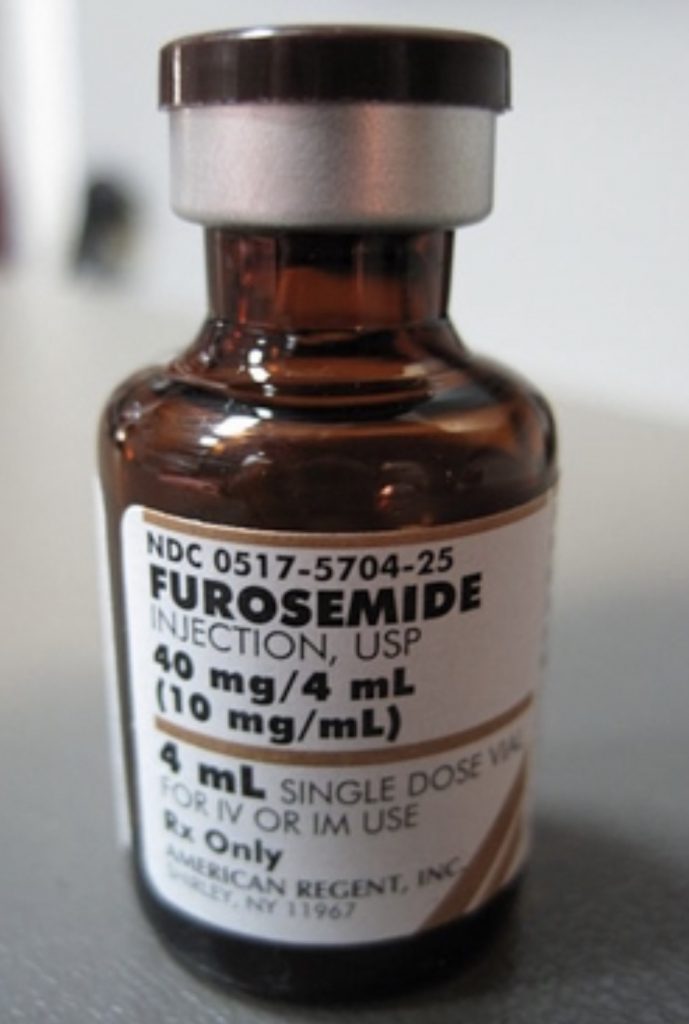
Lasix- The Nitty-Gritty What Does Lasix Actually Do?
By: Victoria Paige Galindo
Lasix has been covered head to toe in recent years and even more so now in-light of the influx of horse deaths at Santa Anita park. Lasix is receiving a lot of blame and has easily become one of the most hotly debated topics in the horse racing world. But despite all of the coverage on lasix, is it really getting total coverage? There’s no need for another article spelling out how Lasix is used to help horses suffering from EIPH (exercise induced pulmonary hemorrhage) and the controversy therein. In matters of debate, it’s not enough to focus on the surface of a cause and effect relationship, like Lasix draining blood from a horse’s lungs. There should be more attention focusing on the details of how Lasix works once inside the horse.
By nature, Lasix is a diuretic which means the horse will urinate in large amounts when the drug is administered. This seems far removed from draining blood in the lungs so where is the correlation? To fully understand this process, Lasix itself has to undergo a dissection.
It’s All In The Name
Don’t worry, this won’t read like your college chemistry textbook with chemical compounds that are impossible to pronounce and structural formulas that make the reader lose brain cells. The one and only active ingredient in Lasix is furosemide, the original name of the drug. It’s a diuretic that is an anthranilic acid derivative, which is just a fancy way of saying it’s another use of the same chemical compound also used in making other things, like perfumes. Who knew Juicy Couture could have something in common with horses?
How Lasix Works
Specifically, lasix is a loop diuretic, which means its effectiveness takes place in the kidneys. It acts by entering the horse’s kidneys and causes them to increase the amount of potassium and sodium by binding itself to the chloride transport channel. Subsequently, these salts are substantially filtered out of the blood and into the urine. While this filtering takes place, even more water is drawn out from the blood along with the salts which is why horses can easily lose up to 20 extra pounds when administered with Lasix.
When a horse is going under intense exercise, such as running hard for long distances, its body is able to produce more oxygen-carrying red cells to its heart due to increased blood pressure on the artery connecting the heart to the lungs. The bleeding happens when the extra blood pressure causes the capillaries at the bottom the lung to burst from the horse running hard. Because the drug decreases potassium and sodium levels, the extra blood pressure on the blood vessels and artery is able to drop significantly. And since blood is largely made up of water, this, coupled with decreased blood pressure to prevent more blood flow, is how the excess blood in the horse’s lungs is drained.
Side Effect and Cautions of Lasix
So far, the only known side effects this drug has in healthy, adult horses are the loss of electrolytes and dehydration, both of which can be easily countered with the appropriate methods. This low level of side effects is largely due to the absence of multiple active ingredients in the drug. There are factors to consider, however, for certain groups of horses. For example, in cases of administering the drug to a foal, extra precautions should be made since a foal is more reliant on retaining water and electrolytes at such a young age. Obviously, given the nature of the drug’s mechanisms, Lasix should never be given to older horses with abnormal kidney and liver functions.
Lasix, Wrapping It Up
Lasix has been scientifically proven to be a safe way to treat this condition that plagues the majority of horses in high-intensity competitions. It simply lowers blood pressure by helping the horse’s body expel excess salts through urination. It can solve a common equine health problem without the complexities of an invasive procedure. The drug can be administered intravenously, and it works within 30 minutes. Hot topic debate aside, at the end of the day, Lasix is a drug that helps safely stop bleeding in horses’ lungs. It’s that simple yet can be that complicated at the same time.
This is not an argument for or against the use of lasix in racehorses, nor the possibility of it being used excessively, or in horses that may not need it. Those are entirely different discussions. This simply explains how lasix works, and what it is intended to do. One must fully comprehend that before moving on to all the other issues.



